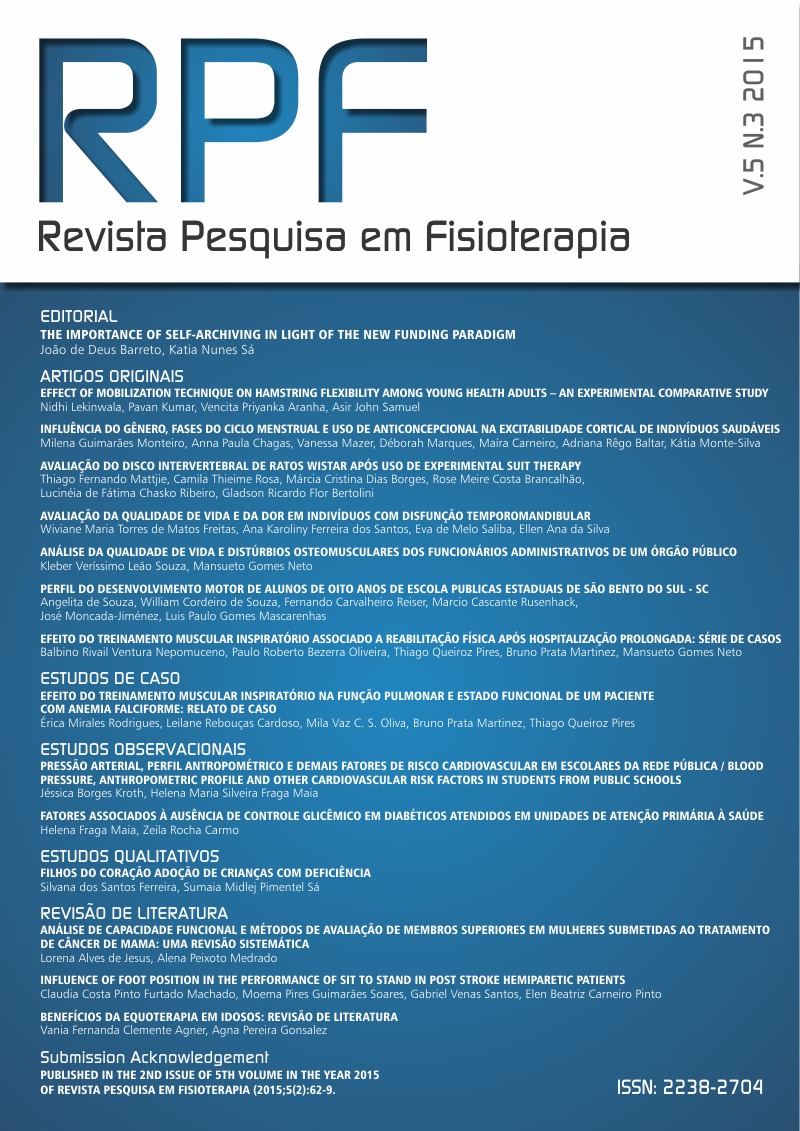EVALUATION OF QUALITY OF LIFE AND PAIN IN PATIENTS WITH TEMPOROMANDIBULAR DISORDER
DOI:
https://doi.org/10.17267/2238-2704rpf.v5i3.636Keywords:
Syndrome temporomanbibular join disorder, Chronic pain, Quality of lifeAbstract
Actually, studies suggest that about 40% to 60% of the general population is affected by some type of temporomandibular dysfunction (TMD), and know is that can dysfunction cause harm to the individual’s integrity. Objective: To evaluate the quality of life and pain in patients with temporomandibular dysfunction. Material and Methods: Were interviewed 27 women submitted to a questionnaire containing information about the socio-demographic profile, as well as instruments for collecting clinical information on the quality of life and pain by existing DTM. The materials used Were Oral Health Impact Profile - 14 and Pain Questionnaire Br-MPQ. Results: We identified 31.74 averages a year of age as between participants, most unmarried and how prevalent occupation as students. In aspects of pain, showed interference in activities such as sleep (35%), high involvement upon appetite (30%). Impairing the quality of life in areas such as persistent pain, with discomfort while eating and stress by oral problems. Conclusion: It can observed that the DTM directly interfered in aspects of the quality of life (work, sleep and appetite), despite the reduced sample size, suggested to new studies toward the need for guidelines and treatment appropriate in this public, as a strategy to minimize the affections of dysfunction in the wearer’s life DTM.



